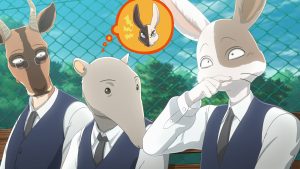 I don’t know if Beastars is “Strange and Beautiful” – a compliment I pay to very few anime and a phrase which to me holds more meaning than the individual words do separately (sort of like the Japanese “ibasho”). But it is strange, and it is beautiful, of that I have no doubt. Orange is doing some wonderful things here visually – Kato Michiya’s haunting stop-motion OP, the gorgeous set design and backgrounds, the cinematography. But they’re all as strange as they are beautiful, and add to the unnerving sense of wrongness that I think is a very much intentional element of Beastars‘ character.
I don’t know if Beastars is “Strange and Beautiful” – a compliment I pay to very few anime and a phrase which to me holds more meaning than the individual words do separately (sort of like the Japanese “ibasho”). But it is strange, and it is beautiful, of that I have no doubt. Orange is doing some wonderful things here visually – Kato Michiya’s haunting stop-motion OP, the gorgeous set design and backgrounds, the cinematography. But they’re all as strange as they are beautiful, and add to the unnerving sense of wrongness that I think is a very much intentional element of Beastars‘ character.
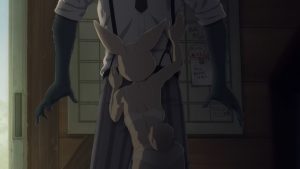 Indeed, I’m having as hard a time figuring out just what I think and feel about this series as any for a long time. It’s very plain to me that there’s some deep introspection behind the writing, but it has a curiously unformed quality to it – almost as if the mangaka were free-associating rather than working with a set structure in mind. Either Itagaki-sensei is extremely good at writing in a flowing and natural way, or she really is letting the narrative dictate its own flow as she writes it. I often take that approach myself when I write fiction, and as such I tend to recognize it when I see it.
Indeed, I’m having as hard a time figuring out just what I think and feel about this series as any for a long time. It’s very plain to me that there’s some deep introspection behind the writing, but it has a curiously unformed quality to it – almost as if the mangaka were free-associating rather than working with a set structure in mind. Either Itagaki-sensei is extremely good at writing in a flowing and natural way, or she really is letting the narrative dictate its own flow as she writes it. I often take that approach myself when I write fiction, and as such I tend to recognize it when I see it.
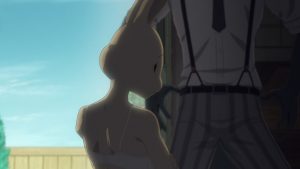 Ask yourself this: in the scene where Haru and Legosi are in her clubroom, which one is the predator and which one is the prey? And is there a deeper commentary behind this from the author? When a series is as obviously tied up in metaphor as Beastars is, it’s easy to see hidden meanings lurking in every corner. As I noted last week, most (though not all) of the carnivores we’ve seen have been male, and most of the females we’ve seen have been herbivores. But in the realm of sexual attraction, does the male’s urgent need make him the prey of the one who has the power to sate it?
Ask yourself this: in the scene where Haru and Legosi are in her clubroom, which one is the predator and which one is the prey? And is there a deeper commentary behind this from the author? When a series is as obviously tied up in metaphor as Beastars is, it’s easy to see hidden meanings lurking in every corner. As I noted last week, most (though not all) of the carnivores we’ve seen have been male, and most of the females we’ve seen have been herbivores. But in the realm of sexual attraction, does the male’s urgent need make him the prey of the one who has the power to sate it?
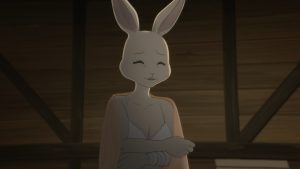 Then we have Louis, whose towering sense of self has defined the first three episodes of Beastars as much as anything has. What’s behind his taunting of Legosi, virtually ordering the wolf to attack him? Legosi may or may not have eaten Tam and he almost certainly tried to eat Haru, but he’s certainly a sympathetic person. Who among us hasn’t wrestled with the elements of our nature than frighten or disgust us, wondered whether we as individuals were more than the sum of our genetic programming? Louis’ intense desire to overcome his physical limitations and perform is perfectly recognizable and relatable, but there’s clearly something deeper and darker behind it.
Then we have Louis, whose towering sense of self has defined the first three episodes of Beastars as much as anything has. What’s behind his taunting of Legosi, virtually ordering the wolf to attack him? Legosi may or may not have eaten Tam and he almost certainly tried to eat Haru, but he’s certainly a sympathetic person. Who among us hasn’t wrestled with the elements of our nature than frighten or disgust us, wondered whether we as individuals were more than the sum of our genetic programming? Louis’ intense desire to overcome his physical limitations and perform is perfectly recognizable and relatable, but there’s clearly something deeper and darker behind it.
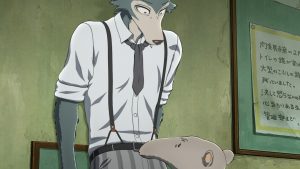 With the revelation that the theatre club is a band of misfits who were selected expressly for their dark personal histories, one wonders what the other shoe still to drop with both Louis and Legosi is. These two are clearly foils for each other, but I don’t think they’re enemies. Still, in nature they would be – and though there are clearly both rules and laws in this mythology designed to prevent nature from asserting itself, such things clearly have their limits. Is one overanalyzing if they wonder who thought it was a good idea to put these creatures in the same school and forced them to coexist? But then – one might look at a normal human high school sometimes and wonder the same thing…
With the revelation that the theatre club is a band of misfits who were selected expressly for their dark personal histories, one wonders what the other shoe still to drop with both Louis and Legosi is. These two are clearly foils for each other, but I don’t think they’re enemies. Still, in nature they would be – and though there are clearly both rules and laws in this mythology designed to prevent nature from asserting itself, such things clearly have their limits. Is one overanalyzing if they wonder who thought it was a good idea to put these creatures in the same school and forced them to coexist? But then – one might look at a normal human high school sometimes and wonder the same thing…



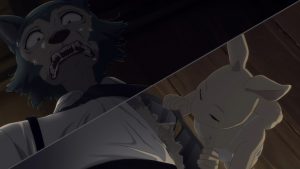
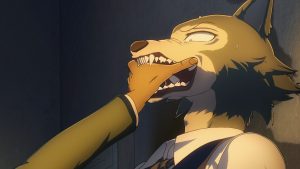
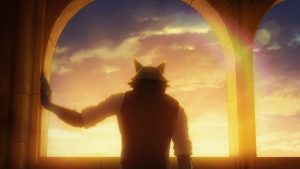
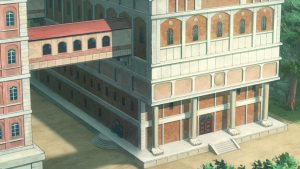
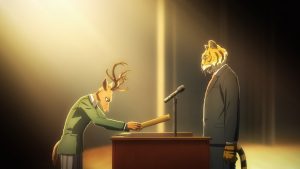
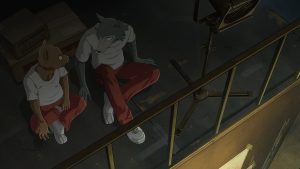
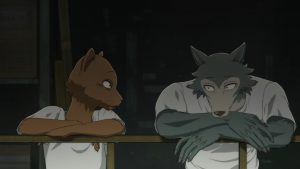
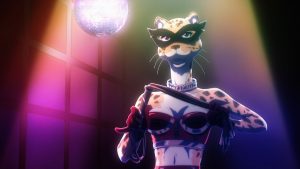
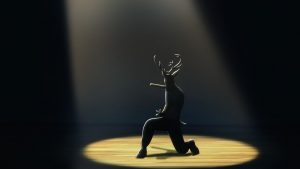
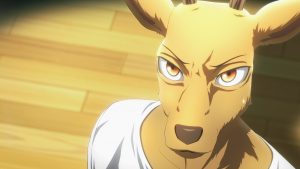
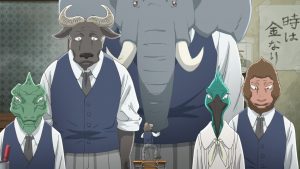
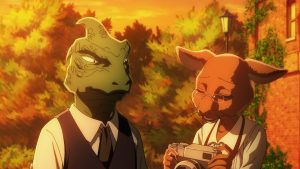
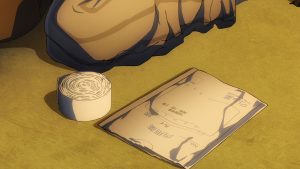
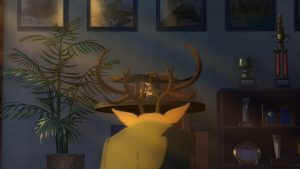
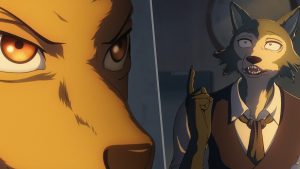
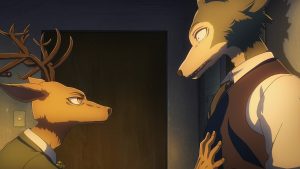
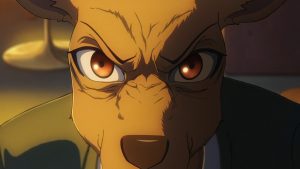
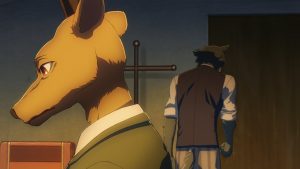
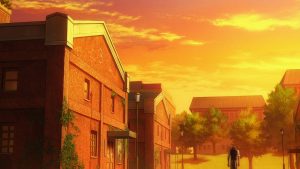
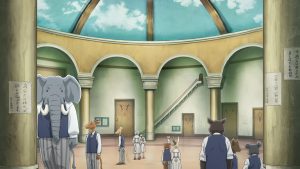
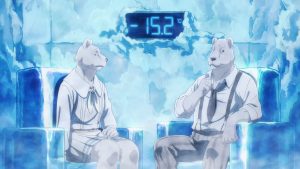
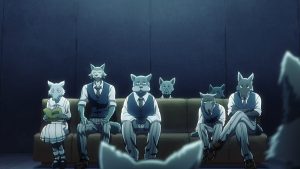
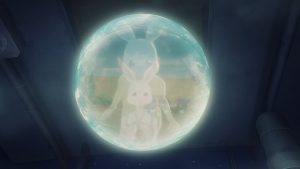

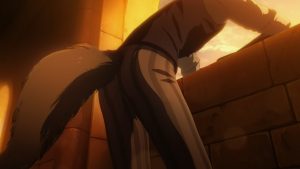
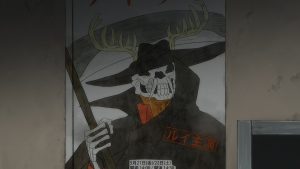

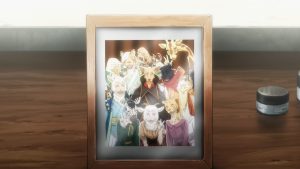
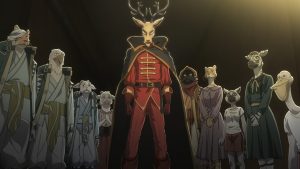
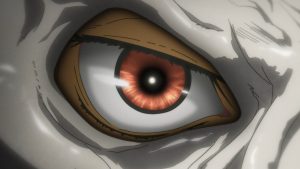
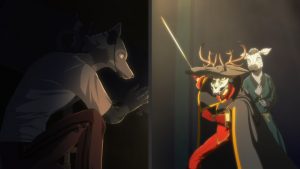
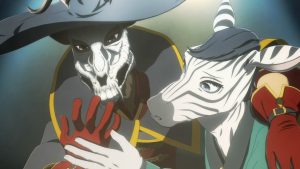
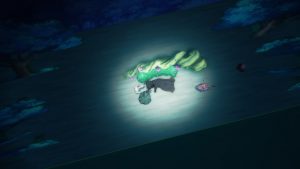

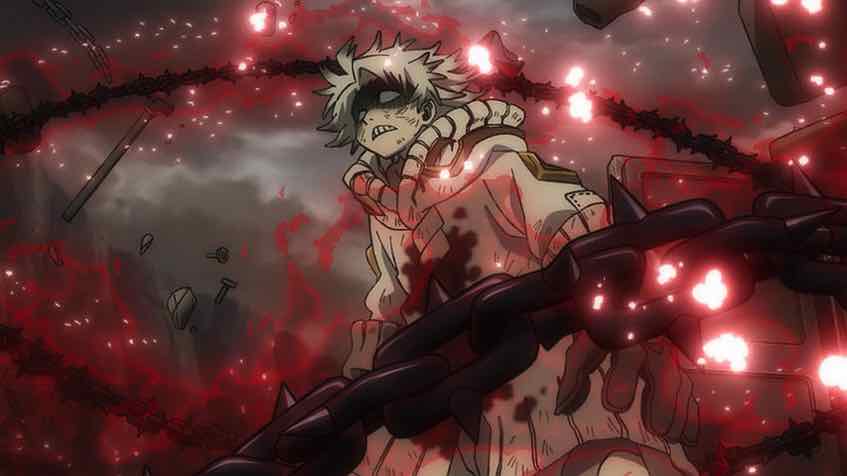
Nadavu
October 28, 2019 at 10:16 pmI’m getting serious Brave New World vibes here. This is a dystopia parading itself as a utopia (which I guess all dystopias do).
I thought the environmental hour was brilliantly funny, but I’m sure it too is a hint of something darker lurking just below the surface.
As for Louis, I think it’s telling that his Shinigami mask is a herbivore skull with carnivorous canines.